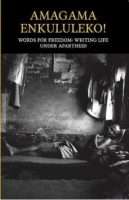The political quiet of the 1960s came to an end with the 1973 Durban strikes and the Soweto uprising of 1976. It was the beginning of a new time of protest and struggle. These new protests should be understood in terms of economic changes, Bantu education, and the ideology of Black Consciousness.
During the 1960s the South African economy grew, but by the middle of the 1970s there was a drop in the gold price and a rise in inflation. Many workers lost their jobs, fewer jobs were available to job-seekers, and those who kept their jobs had to make their wages stretch further as the cost of living rose. This motivated workers to organise and fight. In 1973 around 100 000 black workers in Durban went on strike in protest at low wages and job losses. This was a very significant moment, as under Apartheid it was illegal for black workers to be members of trade unions, and there had been no strikes since the 1950s. These were the first rumblings of the strong trade union movements which understood fighting for better conditions in the workplace and fighting against broader Apartheid injustice as inherently linked. They would play a major role in the struggle from then on.
The economy also affected students. For one, it became even more difficult to find jobs when they left school. This was especially true given that black students were taught under Bantu Education, which gave them an intentionally inadequate and unequal education. It was designed to create and protect a supply of cheap and obedient labour. It did this by making sure that students could not reach the level of education whites had, and could therefore never properly compete with whites for jobs, working only in the least-skilled and lowest-paying positions. This left students angry and frustrated.
Also, more and more black students were attending secondary school. Bantu Education meant there were more primary than secondary schools for black students, because not all of them were supposed to make it to secondary school. But despite the obstacles put in place by the Apartheid government, increasing numbers of black students were finishing primary school and enrolling in secondary school. Black families also continued to move to the cities. In the early 1970s more township schools had been built, but once the economy slowed down this stopped. This meant that the little funding township schools received, and the poor infrastructure in these schools, was spread even more thinly. Classes, especially in secondary schools, became even more crowded than before.
School students were also able to criticise Bantu Education using the tools of the new ideology sweeping the country, Black Consciousness (BC). BC was born in the late 1960s with Steve Biko’s writing and activism. Biko argued that colonisation and Apartheid were not just about political control and oppression: they also influenced the way oppressed people felt and thought about themselves. Oppression made them feel inferior to white people and made them dislike being black in a society that celebrated being white. In fact, Apartheid did not even refer to “black” people – it called them non-whites.
BC therefore said that black people could not be free until they challenged the values that went along with Apartheid. In redefining their values, black people’s self-image and outlook would change – they would become proud of their blackness, and from this foundation, start to challenge the power relations at work in the country. It was a way of building up feelings of dignity, value and equality for black South Africans.
A popular BC slogan was “the most powerful weapon in the hands of the oppressor is the mind of the oppressed.” This appealed to students, as it showed how Bantu Education worked as a tool to shape and limit the minds and futures of black people.


